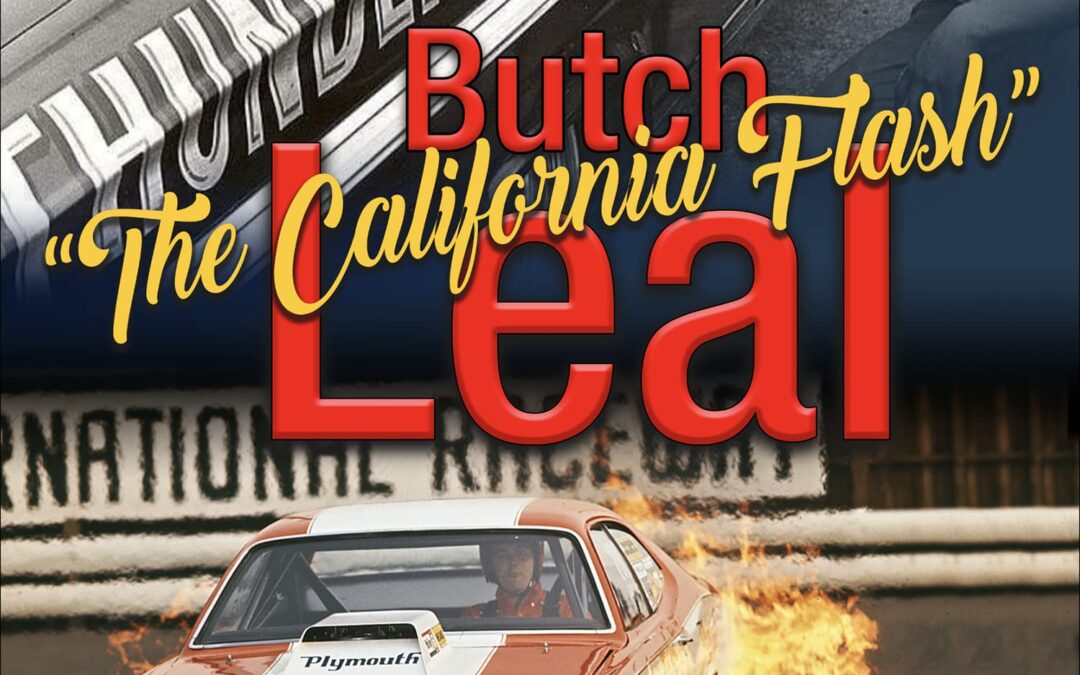
Check out the first ever biography on the popular drag racer, Butch “The California Flash” Leal.
Born and raised in central California, Larry “Butch” Leal was obsessed with cars from a very early age. What began with field cars turned into hard work and new Chevrolets. This took place when the golden era of drag racing was in its infancy, and Leal joined with enthusiasm. He performed well at the track with his early Chevys and had an impressive number of wins before he was out of high school. His success brought him plenty of attention and collaboration with other big names in the sport.
In 1963, GM pulled out of the sport on an official basis. As a result, Butch (at age 19) teamed up with Mickey Thompson and joined the Ford camp, securing a ride with the factory team and its new Thunderbolts for 1964. After his success that season, including winning the Super Stock (S/S) class at the 1964 NHRA US Nationals in Indianapolis, Chrysler came calling, and Butch signed on to race the new altered-wheelbase cars in match races for 1965, as the NHRA did not have a class for these new “funny” looking cars. While Leal dabbled again with Ford and Chevrolet later, his relationship with Chrysler lasted well into the following decades, running both Funny Cars and Super Stockers.
Penned by talented automotive historian Bob McClurg, who was there for it all, and featuring full collaboration with the book’s subject, Butch “The California Flash” Leal covers the span of his fascinating career during arguably the most interesting era in drag racing history. Butch was an 11-time NHRA champion and 4-time recipient of Car Craft magazine’s All-Star Driver of the Year award in a career that spanned the 1960s through the 1990s. It’s all here, the events, great vintage photography, and the stories from one of the best storytellers the NHRA has ever known. Add this entertaining volume to your drag racing library today.
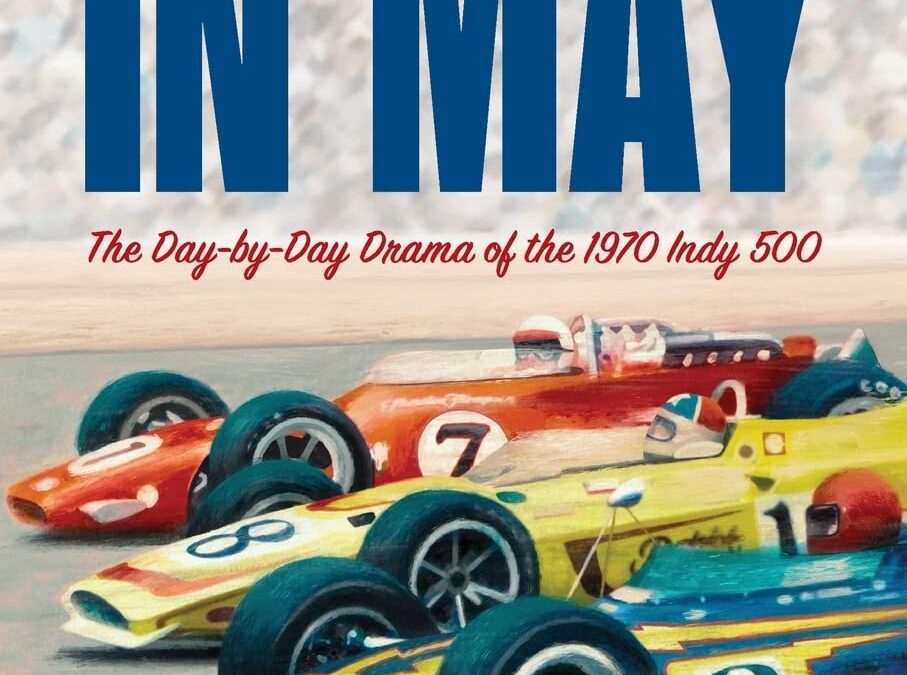
Thirty days! From the moment the drivers entered in the 1970 Indianapolis 500 rolled their cars onto the track for practice until the command “Gentlemen, start your engines,” they faced thirty days of intense action. The drivers needed to go fast enough to earn one of thirty-three starting positions. Only then would they have a chance to win what sportswriters and fans called “the Greatest Spectacle in Racing.”
And award-winning sportswriter Hal Higdon was there to report on the action: hovering in the pits next to the racers in their cars, wandering into Gasoline Alley to tell their stories, absorbing all the excitement the month of May brings to Indianapolis.
Here is the tale, day by day, of those thirty crucial days—the drivers with fast cars and slow cars, the drivers with rich sponsors and those with little money, the drivers with talent and those who need good luck to place high or even qualify. The list of competitors in 1970 was formidable, and included Mario Andretti, Dan Gurney, Mark Donahue, A.J. Foyt, and the Unser brothers. Add the owners: Roger Penske and Andy Granatelli.
Once the gentlemen start their engines, the race begins. The danger builds. A tiny twitch heading into a turn can result in bent metal and lost lives. Even the fans live in danger.
This is the story of the 1970 Indy 500, but the scenes are repeated on the stained turns of the Indianapolis Motor Speedway year after year.
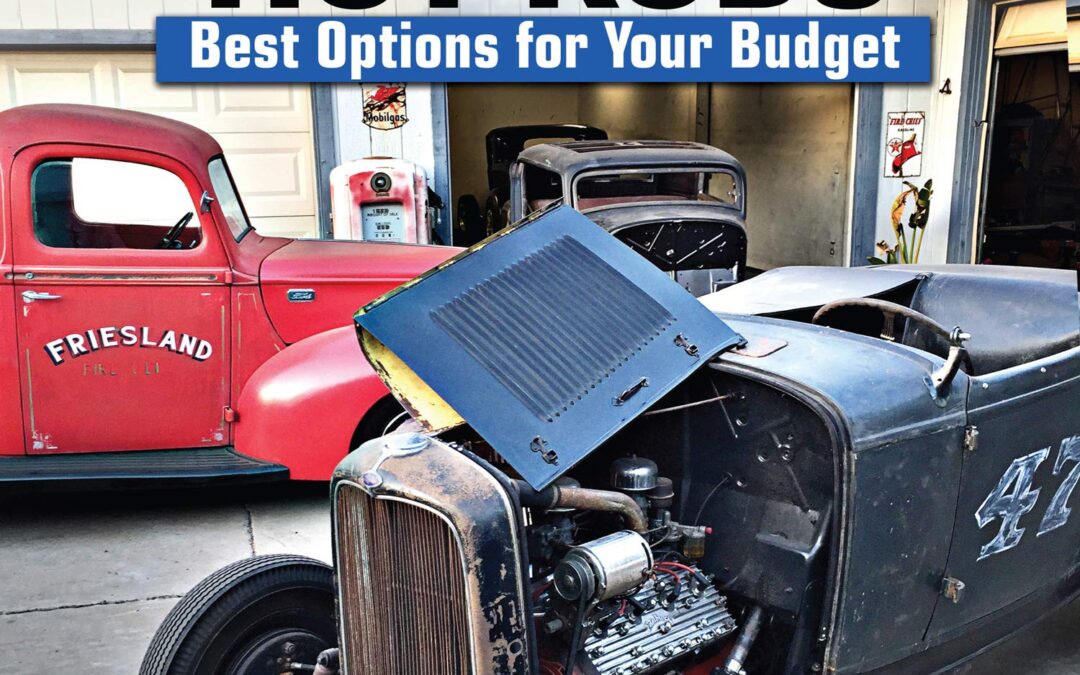
Learn how to build an affordable hot rod following the advice of the masters!
In How to Build Affordable Hot Rods, author and lifelong hot rod aficionado Tony Thacker takes you through the process of building a hot rod on a budget. Drawing on his own extensive experience of both buying and building rods, Thacker explores the good, the bad, and the ugly. The good was setting a land speed record at Bonneville, the bad was buying a rod from which the previous owner had “swapped out” the good engine, and the ugly–well, let’s just not go there. How to Build Affordable Hot Rods includes extensive how-to sections that cover step-by-step chassis builds for Model A, 1932, and 1936 Fords, including front- and rear-end setups. The in-depth chassis builds are complimented with sections on powertrain choices, bodywork and roof chops, wheels and tires, and wiring and paint. Also included are chapters on interiors and the all-important details that individualize any project to ensure that it stands out from the rest.
When Henry Ford introduced his beloved Model T, he unwittingly gave the average person the means to go racing. Prior to the T, racing was mostly a sport of the rich, but that changed with the Model T. Stripped of fenders and hopped up with speed parts, T speedsters ruled, and it wasn’t long before enthusiasm on the track translated to the street and the term hot rod entered the vernacular.
Of course, it didn’t need to be a Ford (and still doesn’t), but the easiest and therefore cheapest route to Hot Rod Boulevard is down the Ford road. The journey accelerated after World War II, as hot rodding boomed with the growth of speed shops, car shows, drag racing, talented and trained GIs returning home, and the launch of Hot Rod magazine to spread the gospel far and wide. More than 100 years after the original Model T, hot rodding remains alive and well in the Australasia, Europe, and (of course) its birthplace the US.
Learn from the best and get started building your affordable hot rod today!
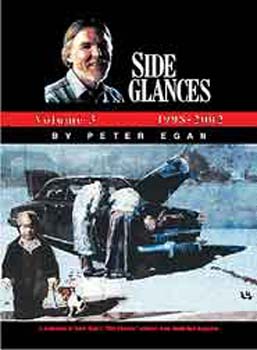
“In every sort of creative environment, there are a number of people who are good, a handful who are poor and very, very few who are truly talented. Peter Egan resides in this last group in the arena of automotive writers. Peter has a unique gift: he is able to take all of the thoughts and feelings each of us has had at one time or another and put them down on paper. His universal appeal is that he speaks directly to our automotive souls. These titles are collections of Peter Egan’s “Side Glances” columns from Road & Track magazine.
Eagan’s 62 stories in this volume include: ‘Decline of the low-cost cult car’, ‘Blissards of the new millennium’, ‘Formula Ford: the best racing there ever was?’, ‘How to tell when you are an older car buff’, ‘Raicng with half your wheels gone’, ‘Romance and the motor car’, ‘Buy a race car and see the world’, ‘Car repair for near-idiots’, ‘Morgans, Old MGs and the wooden canoe’, ‘Portholes and bombsights’, ‘Alabama getaway’, & ‘Garage cleaning tips’. 132 pgs. Sftbd. Volumes I and II also available.”
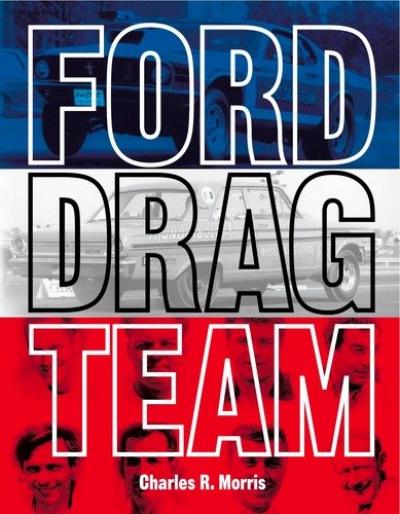
Ford expert and veteran drag-racing author Charles R. Morris has written the definitive book covering the members of the Ford Drag Council and Drag Team of the 1960s, perhaps the most important decade in Ford performance history. In writing Ford Drag Team, Morris performed candid, one-on-one interviews with Ford drag racing legends like Phil Bonner, Hubert Platt, Ed Terry, Randy Payne, Al Joniec, the late Bill Lawton, Drag Team captain Dick Brannan, and more. Morris also collected factory documents and race reports and scoured the earth for photos and statistics to document the full story of these drag racing pioneers. Ford Drag Team is your opportunity to get the true story, directly from those who made the history from behind the wheel and behind the scenes. You’ll learn how this talented group of individuals from diverse backgrounds came together to make motorsports history that should never be forgotten.







